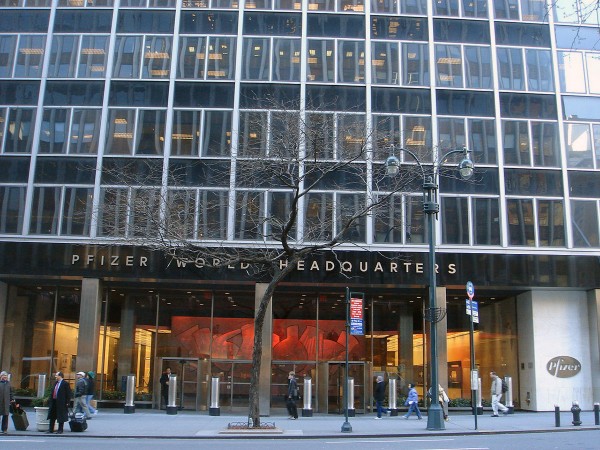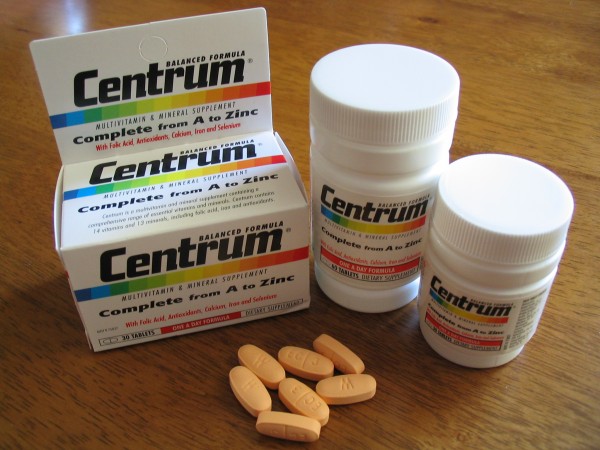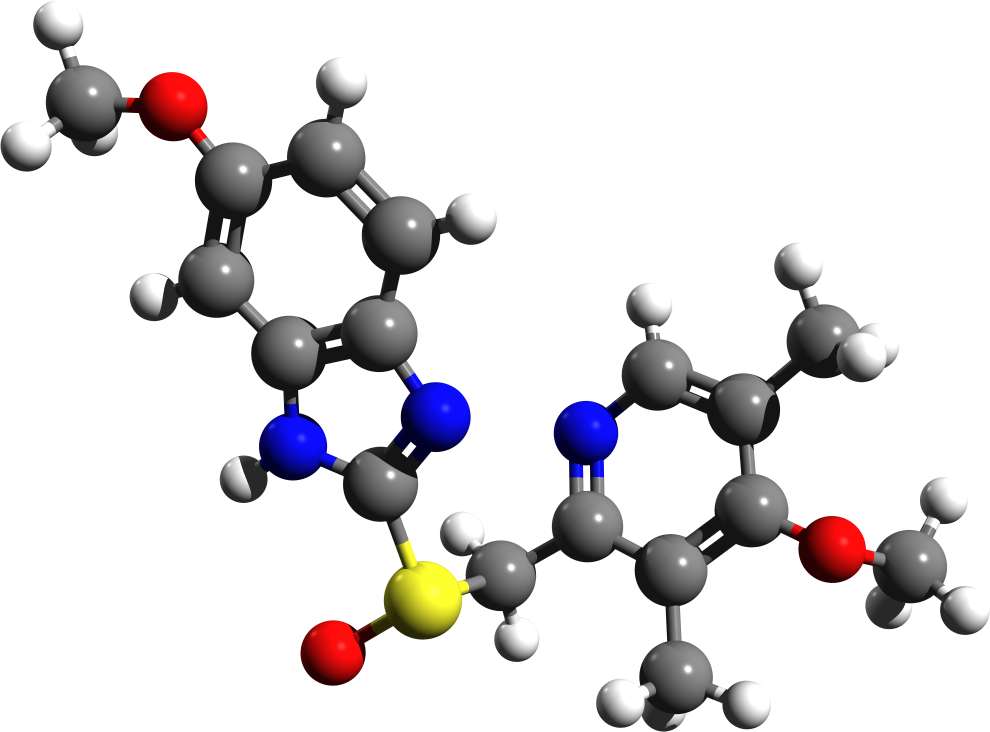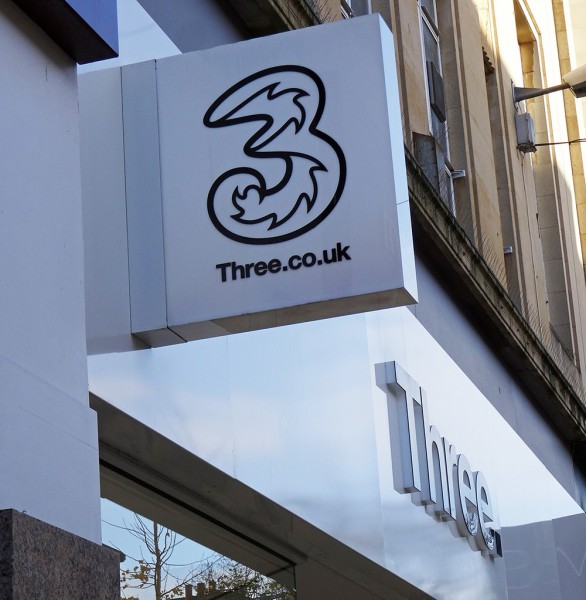 Evidence of widespread tax avoidance has featured heavily in the news recently. Furthermore, recent developments also suggest that avoiding taxes has become an important motivation for merger and acquisition (M&A) activity. For example, Pfizer, the US pharmaceutical giant that producers Viagra, has for a while been looking to expand through M&A. Following a failed
Evidence of widespread tax avoidance has featured heavily in the news recently. Furthermore, recent developments also suggest that avoiding taxes has become an important motivation for merger and acquisition (M&A) activity. For example, Pfizer, the US pharmaceutical giant that producers Viagra, has for a while been looking to expand through M&A. Following a failed  attempt to merge with the British pharmaceutical company AstraZeneca in 2014, it instead agreed late last year to merge with a company called Allergan. This was set to be the largest healthcare merger ever, worth over £100bn.
attempt to merge with the British pharmaceutical company AstraZeneca in 2014, it instead agreed late last year to merge with a company called Allergan. This was set to be the largest healthcare merger ever, worth over £100bn.
What is key about Allergan is that, whilst it is run from the USA, it is legally registered as being based in Ireland. It has been strongly argued that the key motivation for the merger was tax avoidance with Pfizer’s strategy described in this way:
They look for a likely partner based in a country with a lower corporate tax regime and suggest a merger. When the merger goes through, the company based in the US moves its HQ – but not the bulk of its operations – to the low-tax jurisdiction, where it books the bulk of its profits. At a stroke, the company’s tax bill is cut.
This practice is sometimes referred to as an inversion. It has been suggested that over the past five years around 40 completed mergers have been motivated by similar objectives.
However, policy makers, in particular in the USA, where corporation tax is high, have increasingly become aware of the practice. President Obama recently made clear that:
If corporations are paying less tax, only one of two things can happen. The US will have less to spend on schools, roads and public health, or taxes will have to be raised on the country’s middle class.
In 2014 some tightening of the tax rules took place, but with limited effect. Then, earlier this month President Obama implemented a series of new rules to attempt to prevent the practice. He stressed that these new rules would help to deter companies from taking advantage of:
one of the most insidious tax loopholes out there, fleeing the country just to get out of paying their taxes.
Almost immediately the Pfizer-Allegan merger was abandoned and Pfizer was required to pay a break-up fee of $150m to Allegran. The parties involved were far from happy and the chief executive of Allegran stated that:
For the rules to be changed after the game has been played is a bit un-American.
However, a spokesman for the White House responded that:
I think it is difficult to have a lot of patience for an American C.E.O. trying to execute a complicated financial transaction to avoid paying taxes in America, talking about what it means to be a good citizen of the United States.
 As has been highlighted, the decision to immediately abandon the merger provides a clear indication that the business case and potential synergies arising from combining the two companies were far less important than the benefits from tax avoidance.
As has been highlighted, the decision to immediately abandon the merger provides a clear indication that the business case and potential synergies arising from combining the two companies were far less important than the benefits from tax avoidance.
Where does the abandoned merger leave Pfizer? One option will be to consider alternative mergers. Perhaps reflecting this possibility, the share prices of foreign rivals such as AstraZeneca and GlaxoSmithKline increased following the announcement that the Allegran deal had been abandoned. However, an alternative under serious consideration appears to be the opposite strategy of shrinking Pfizer’s operations. It has been argued that this would allow the company to be become more focused.
It remains to be seen in which direction Pfizer will go. However, what this example clearly illustrates is the impact changes in regulatory policy can have on firms’ strategic decisions.
Articles
Collapse of $160bn Pfizer and Allergan merger shocks corporate US Financial Times, Barney Jopson, David Crow, James Fontanella-Khan and Arash Massoudi (6/4/16)
It’s off: the end of Pfizer’s $160 billion Allergan merger The Atlantic, Krishnadev Calamur (6/4/16)
Pfizer and Allergan terminate $160bn merger following US tax crack-down The Telegraph, Julia Bradshaw (6/4/16)
Questions
- Who do you think will be the big winners and losers from the merger being abandoned?
- Why do you think break-up fees are used in merger deals?
- What are the pros and cons for Pfizer of continuing to pursue M&As rather than downsizing?
- Are there any alternative strategies it might consider?
 On Monday 23rd November, the US based pharmaceutical business Pfizer (producer of Viagra) announced that it had reached a $160 billion deal to acquire the Irish based pharmaceutical business Allergan (producer of Botox). If it is successful it will be the third largest deal in takeover history.
On Monday 23rd November, the US based pharmaceutical business Pfizer (producer of Viagra) announced that it had reached a $160 billion deal to acquire the Irish based pharmaceutical business Allergan (producer of Botox). If it is successful it will be the third largest deal in takeover history.
In a previous blog on this website a number of reasons were discussed to explain why businesses may engage in mergers and acquisitions (M&As) Are large mergers and acquisitions in the interests of the consumer . These include market power, access to growing markets, economies of scale and reducing x-inefficiency. One of the interesting things about the Pfizer and Allegan deal is the importance of another factor that was not discussed in the article – tax avoidance.
Rates of corporation tax vary considerably between countries and may deter some businesses from operating in the US where it is at the relatively high level of 35%. This compares with a rate of 20% in the UK, 12.5% in Ireland and 0% in Bermuda. The global average rate is 23.7% whereas the average across EU countries is 22.2%.
However, a far bigger incentive for a US firm to merge with or acquire businesses in other countries is the unusual way the US authorities tax profits. Most countries use a territorial system. This means that tax is only paid on the profit earned in that country. For example if a UK multinational business has subsidiaries in other countries it only pays corporation tax in the UK on profits earned in the UK. The profits earned by its subsidiary businesses would be taxed at the rate set by the government in the country where they were located.
The US authorities use a worldwide system. This means that profits earned by a subsidiary in another country are also taxed in the US. This is best explained with the help of a simple numerical example.
Assume a US multinational earns $100,000 in profits from a subsidiary based in Ireland. These profits will be taxed in Ireland at the rate of 12.5% and the company would have to pay $12,500 to the Irish government. If that profit was returned to the US it would be taxed again at a rate of 22.5%: i.e. 35% – 12.5%. The company would have to pay the US authorities $22,500.The worldwide system means that the total rate of tax paid by the firm is 35% but it is split between two different countries. If the territorial system was used, the firm would only pay the $12,500 to the Irish government.
So how could M&As change things? If an M&A enables a US multinational business to change its country of incorporation (i.e. move the address of its headquarters) from the US to another country that operates a territorial system its payments will fall. This is sometimes referred to as tax inversion. As the Bloomberg columnist Matt Levine stated:
If we’re incorporated in the U.S., we’ll pay 35 percent taxes on our income in the U.S. and Canada and Mexico and Ireland and Bermuda and the Cayman Islands, but if we’re incorporated in Canada, we’ll pay 35 percent on our income in the U.S. but 15 percent in Canada and 30 percent in Mexico and 12.5 percent in Ireland and zero percent in Bermuda and zero percent in the Cayman Islands.
 As a result of the merger with Allergan, Pfizer will move the address of its headquarters to Ireland even though its global operations and executives will still be based in New York. It has been estimated that this will generate a one off tax saving of $21 billion as Pfizer would avoid having to pay US taxes on $128 billion of profits generated by its non US subsidiaries.
As a result of the merger with Allergan, Pfizer will move the address of its headquarters to Ireland even though its global operations and executives will still be based in New York. It has been estimated that this will generate a one off tax saving of $21 billion as Pfizer would avoid having to pay US taxes on $128 billion of profits generated by its non US subsidiaries.
A number of US politicians have condemned the proposed deal. For example Hilary Clinton stated:
This proposed merger, and so called inversions by other companies, will leave US taxpayers holding the bag.
Twenty US companies have moved their headquarters to countries that operate a territorial system of taxation since 2012. These include Burger King’s move to Canada and Medtronic’s move to Ireland.
The US government has tried to tighten the rules but the two major parties disagree about how to deal with the problem.
Articles
Pfizer Seals $160bn Allergan deal to create drugs giant BBC News,(23/11/15)
Pfizer’s $160bn Allergan deal under pressure in the US BBC News,(24/11/15)
Pfizer set to buy Allergan in $150bn historic deal The Telegraph,(23/11/15)
Pfizer and Allergan poised to announce history’s biggest healthcare merger-corporate-tax The Guardian,(22/11/15)
Pfizer takeover: what is a tax inversion deal and why are they so controversial? The Guardian,(23/11/15)
Questions
- The newly merged business would jump above Johnson and Johnson to become the world’s largest biotech and pharmaceutical company in the world. Who are the other biggest eight Biotech and pharmaceutical businesses in the world?
- What exactly is a subsidiary? Give some real-world examples.
- How have the US authorities changed the rules in an attempt to deter tax inversions?
- Assume that a US multinational makes $1 million profit in the US and $1 million profit from its subsidiary in Ireland. Explain how changing its country of incorporation from the US to Ireland will alter the amount of corporation tax that it has to pay.
 There have been a number of recent developments in communications markets that may significantly alter the competitive landscape. First, the UK Competition and Markets Authority (CMA) has provisionally cleared BT to takeover the EE mobile phone network. The deal will allow BT to re-establish itself as a mobile network provider, having previously owned O2 until it was sold in 2005. The CMA said that:
There have been a number of recent developments in communications markets that may significantly alter the competitive landscape. First, the UK Competition and Markets Authority (CMA) has provisionally cleared BT to takeover the EE mobile phone network. The deal will allow BT to re-establish itself as a mobile network provider, having previously owned O2 until it was sold in 2005. The CMA said that:
They operate largely in separate areas with BT strong in supplying fixed communications services (voice, broadband and pay TV), EE strong in supplying mobile communications services, and limited overlap between them in both categories of service.
BT will therefore be in a better position to compete with rivals such as Virgin Media who were early movers in offering.  Second, O2 itself (currently owned by Telefónica) is the subject of a takeover bid from Hutchinson Whampoa who already owns the mobile network Three. Because the companies meet their turnover criteria, this deal is being investigated by the European Commission (EC) and the signs don’t look good. If it goes ahead, it would create the largest mobile operator in the UK and leave just three main players in the market. The EC is concerned that the merger would lead to higher prices, reduced innovation and lower investment in networks. Previously, considerable consolidation in telecommunications markets across Europe has been allowed. However, recent evidence, including the prevention of a similar deal in Denmark, suggests the EC is starting to take a tougher stance.
Second, O2 itself (currently owned by Telefónica) is the subject of a takeover bid from Hutchinson Whampoa who already owns the mobile network Three. Because the companies meet their turnover criteria, this deal is being investigated by the European Commission (EC) and the signs don’t look good. If it goes ahead, it would create the largest mobile operator in the UK and leave just three main players in the market. The EC is concerned that the merger would lead to higher prices, reduced innovation and lower investment in networks. Previously, considerable consolidation in telecommunications markets across Europe has been allowed. However, recent evidence, including the prevention of a similar deal in Denmark, suggests the EC is starting to take a tougher stance.
If we compare the two proposed takeovers, it is clear that the O2–Three merger raises more concerns for the mobile communications market because they are both already established network providers.  However, it is increasingly questionable whether looking at this market in isolation is appropriate. As communication services become increasingly intertwined and quad-play competition becomes more prevalent, a wider perspective becomes more appropriate. Once this is taken, the BT–EE deal may raise different, but still important, concerns.
However, it is increasingly questionable whether looking at this market in isolation is appropriate. As communication services become increasingly intertwined and quad-play competition becomes more prevalent, a wider perspective becomes more appropriate. Once this is taken, the BT–EE deal may raise different, but still important, concerns.
Finally, the UK’s communications regulator, OFCOM, is currently undertaking a review of the whole telecommunications market. It is evident that their review will recognise the increased connections between communications markets as they have made clear that they will:
 examine converging media services – offered over different platforms, or as a ‘bundle’ by the same operator. For example, telecoms services are increasingly sold to consumers in the form of bundles, sometimes with broadcasting content; this can offer consumer benefits, but may also present risks to competition.
examine converging media services – offered over different platforms, or as a ‘bundle’ by the same operator. For example, telecoms services are increasingly sold to consumers in the form of bundles, sometimes with broadcasting content; this can offer consumer benefits, but may also present risks to competition.
One particular concern appears to be BT’s internet broadband network, Openreach. This follows complaints from competitors such as BSkyB who pay to use BT’s network. Their concerns include long installation times for their customers and BT’s lack of investment in the network. One possibility being considered is breaking up BT with the forced sale of its broadband network.
It will be fascinating to see how these communications markets develop over time.
BT takeover of EE given provisional clearance by competition watchdog The Guardian, Jasper Jackson (28/10/15)
Ofcom casts doubt on O2/Three merger BBC News, Chris Johnston (08/10/15)
BT and Openreach broadband service could be split in Ofcom review The Guardian, John Plunkett (16/07/15)
Questions
- What are the key features of communications markets? Explain how these markets have developed over the last few decades.
- What are the pros and cons for consumers of being able to buy a quad-play bundle of services?
- How do you think firms that are currently focused on providing mobile phone services will need to change their strategies in the future?
- Why is BT in a powerful position as one of the only owners of a broadband network?
- Instead of forcing BT to sell its broadband network, what other solutions might there be?
 In December the European Commission (EC) fined 5 envelope makers from Sweden, France, Germany and Spain a total of almost €20m for participating in a cartel. Between 2003 and 2008 these firms had coordinated responses to tenders, fixed prices and exchanged information. This increased the prices paid by their buyers who were stationary distributors and large companies.
In December the European Commission (EC) fined 5 envelope makers from Sweden, France, Germany and Spain a total of almost €20m for participating in a cartel. Between 2003 and 2008 these firms had coordinated responses to tenders, fixed prices and exchanged information. This increased the prices paid by their buyers who were stationary distributors and large companies.
Commenting on this case the European Competition Commissioner Margrethe Vestager stated:
On this case we have closed the envelope, sealed it and returned it to the sender with a clear message: don’t cheat your customers, don’t cartelise.
The EC initiated an investigation and undertook dawn-raids on the companies involved following a tip-off from a whistleblower. The Commissioner also had this message for other firms considering taking part in a cartel:
I do hope that you realise that just a simple tip-off from a whistle-blower, from within the company or from a customer is all it takes for your cartel to come up on our enforcement radar.
A previous post on this site highlighted the fact that the game of golf has played a prominent role in a number of previous cartels and that in these code names for their activities were sometimes adopted. The envelope cartel seems to have gone one step further by combining the two and referring to their cartel meetings as ‘golf’ or ‘minigolf’ appointments.
All firms involved in the cartel settled their case with the EC, resulting in reduced fines. The EC encourages such resolution of cases because it frees up resources and allows them to pursue a larger number of cases. In addition, the fines imposed on two of the companies were reduced due to their inability to pay.
Finally, it is also interesting to note that, following the collapse of the cartel, one of the companies involved went into liquidation and subsequently merged with one of its former cartel co-conspirators. This coincides with broader evidence of merger activity following the breakdown of cartels. One explanation for this is that merger activity is a response to competition breaking out in the post cartel environment.
Antitrust: Commission fines five envelope producers over €19.4 million in cartel settlement European Commission – Press release (11/12/14)
EU regulators bust envelope cartel in time for holiday cards The Guardian (11/12/14)
European Commission fines envelope cartel €19.5m PrintWeek, Simon Nias (06/01/15)
Kipper Williams on the envelope cartel The Guardian, Kipper Williams (12/12/14)
Questions
- What are the key features of the market for envelopes?
- Do the features of this market make it particularly prone to collusive behaviour?
- What are the trade-offs involved in reducing the fines for firms that are willing to settle?
- Is it right that cartel fines are reduced if firms are unable to pay?
 A few months ago, in a post on this site I reported that the Competition Commission (CC) had completed their provisional investigation into the concrete and cement market in Great Britain. As I discussed, they concluded that coordination between the main cement producers was resulting in high prices. They are particularly concerned about the impact of high prices in this market because:
A few months ago, in a post on this site I reported that the Competition Commission (CC) had completed their provisional investigation into the concrete and cement market in Great Britain. As I discussed, they concluded that coordination between the main cement producers was resulting in high prices. They are particularly concerned about the impact of high prices in this market because:
Cement is an essential product for the construction and building sectors and the amount of such work that is funded by the public purse only underlines the importance of ensuring that customers get better value for money. We believe our measures can bring about a substantial, swift and lasting increase in competition in this economically vital market.
The next step was for the CC to consider how they could remedy the situation and hopefully improve competition in the market.
Earlier this month, the CC announced the remedies they intend to impose. Having previously suggested that they intended to impose hard-hitting measures, they have been true to their word. The market leader, Lafarge Tarmac, will be required to sell one of its cement plants to facilitate a new entrant into the market. According to Professor Martin Cave, the CC’s Deputy Chairman who led the inquiry:
We believe that the entry of a new, independent cement producer is the only way to disturb the established structure and behaviour in this market which has persisted for a number of years and led to higher prices for customers.
In addition, the CC is also putting in place measures to limit the publication of production data and price announcements. It is hoped that these measures will reduce transparency in the market.
However, Lafarge Tarmac disagrees with the sale they are being forced to make. This is in part because, as I discussed in the earlier post, they had previously been allowed by the CC to form a joint venture (JV) with one its main rivals:
We are disappointed that the Competition Commission has asked Lafarge Tarmac to divest another cement plant only a year after it allowed the creation of the JV. This is not reasonable or proportionate and we have not been given a fair opportunity to defend our position.
In addition, Lafarge Tarmac is quoted in the above article as suggesting that the end result of the CC’s intervention will be harm to consumers. It will be extremely interesting to monitor how this market develops.
Articles
Competition Commission confirms plan for new cement producer The Construction Index, (14/01/14)
Competition Commission improves competition in the UK. Again. Global Cement, (22/01/14)
Report
Aggregates, cement and ready-mix concrete market investigation, Final report, Competition Commission, (14/01/14)
Questions
- Why might the publication of production data and price announcements help to facilitate coordination between firms?
- Would you expect the new entrant or the measures to limit the publication of production data and price announcements to have more impact on competition in the market?
- Using a supply and demand model, describe the impact the CC’s intervention could have on the construction market.
 Evidence of widespread tax avoidance has featured heavily in the news recently. Furthermore, recent developments also suggest that avoiding taxes has become an important motivation for merger and acquisition (M&A) activity. For example, Pfizer, the US pharmaceutical giant that producers Viagra, has for a while been looking to expand through M&A. Following a failed
Evidence of widespread tax avoidance has featured heavily in the news recently. Furthermore, recent developments also suggest that avoiding taxes has become an important motivation for merger and acquisition (M&A) activity. For example, Pfizer, the US pharmaceutical giant that producers Viagra, has for a while been looking to expand through M&A. Following a failed  attempt to merge with the British pharmaceutical company AstraZeneca in 2014, it instead agreed late last year to merge with a company called Allergan. This was set to be the largest healthcare merger ever, worth over £100bn.
attempt to merge with the British pharmaceutical company AstraZeneca in 2014, it instead agreed late last year to merge with a company called Allergan. This was set to be the largest healthcare merger ever, worth over £100bn. As has been highlighted, the decision to immediately abandon the merger provides a clear indication that the business case and potential synergies arising from combining the two companies were far less important than the benefits from tax avoidance.
As has been highlighted, the decision to immediately abandon the merger provides a clear indication that the business case and potential synergies arising from combining the two companies were far less important than the benefits from tax avoidance.






